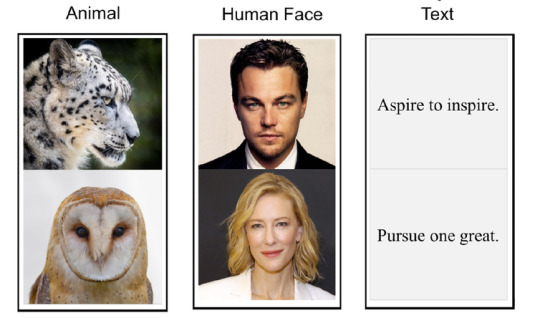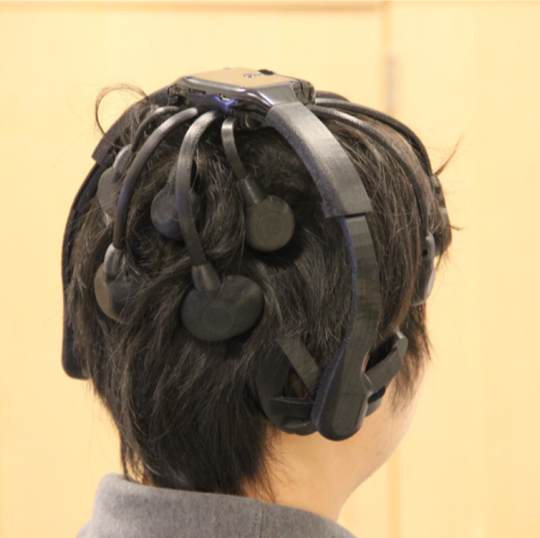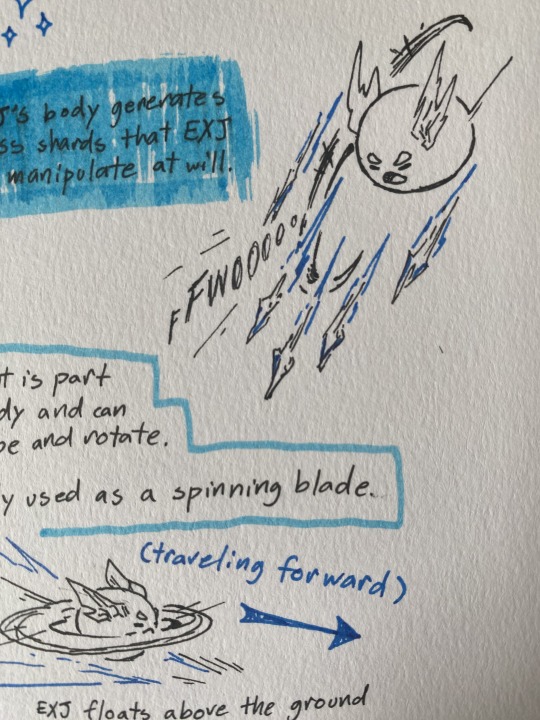#character: zhanpeng
Text
CHARACTER INTRO: ZHANPENG

They/them. Token human character. Approximate English pronunciation of their name is "john-PUNG".
Their basic lore in the slimeguy storyline:
After the main events of the first Slime Rancher, Beatrix decides it's time to move on from the ranch. Motivated partially by a mysterious letter, mostly by wanderlust, she plans to go explore Rainbow Archipelago. Before she leaves, she decides to pass on her old ranch to someone new like Hobson did, and she decides on hosting a raffle so plenty of people can have an opportunity to enter for a chance to buy the property and ticket to The Range. Of course, she doesn't really want someone who isn't passionate to nab the property, so she does have people send in applications (typed out and/or recorded in video messages) to determine who is eligible.
Zhanpeng wins. They say a lot of sappy and cheesy things in the application, but the main thing on their mind is making money. Due to the dangers of ranching on the Range, companies like 7Zee jump at the chance to get fresh meat on the planet, and this is a perfect opportunity to get their name on the list.
They quickly find out that ranching is a LOT harder than expected. Zhanpeng kind of went into getting off-world with the mentality that snagging the property would be the hardest part; once all the paperwork was done and they got there, they'd be able to figure all of the actual ranching logistics out on the way. Easy. Their cockiness ended up backfiring on them, though; Zhanpeng had zero experience in farming, and despite aiming for a career in the production of animal—er… slime—products, they knew jack shit about nature and biology. Due to being a horrible gardener and chicken farmer (all their chickens eventually escaped), they couldn't really even begin to ranch slimes.
Staunchly refusing to give up, they'd instead just go out and explore the planet every day, picking up plants and chickens along the way to feed any slimes they came across. This work was waaay more grueling and inefficient than they'd expected. Zhanpeng quickly found out that slimes aren't the cuddly critters they were made out to be on TV; many of them were extremely dangerous, and very, very, hungry. Aw, man! They actually had to break out the Slimepedia and do some reading. Apparently you DO have to know your shit before you try to do anything. It was a bit of a reality check for them.
After a couple of kinda terrifying days of free-for-all, Zhanpeng suddenly got a call on the Range Exchange machine on the ranch. Honestly, they didn't really know who they were expecting, but it definitely wasn't MOCHI MILES, CEO of only the MOST successful interstellar tech company in the galaxy.
Mochi was immediately pretty disappointed upon seeing them. Her entire reason for calling was that Beatrix's ranch had suddenly come online again. In this timeline, Beatrix had disappeared from her ranch to Rainbow Island without much warning, and, during her voyage and first few weeks exploring, she had been too busy to contact her other rancher friends. Mochi, being Mochi, was concerned about her crush business partner and wanted to know what happened to her. Since Zhanpeng was currently her only link to Beatrix, she decided it'd be a good idea to keep them in her back pocket if Beatrix ever contacted Zhanpeng again.
Mochi offered them a job—the same one she'd offered Beatrix not so long ago, mostly because it was very mundane, very easily, and had no chance of putting her empire at risk—feeding quicksilver slimes.
Zhanpeng eagerly accepted, relieved to finally have a predictable source of income (and also somewhat afraid that she would smite them if they said no). Running around with quicksilver slimes gave them a chance to get a little knowledge about slime behavior through osmosis, and occasionally Mochi would exasperatedly point them toward ranching resources if they seemed to be having too much trouble on their exploration adventures (they got—and still do get—injured quite a lot).
Some time passed—during which Zhanpeng finally brought slimes to their ranch, though not in any way they expected—before Mochi suddenly received intel on where Beatrix might be: a new, undiscovered archipelago of islands on the Far, Far Range. Unable to up-and-leave her business, Mochi (toooootally legally) sent Zhanpeng to the island, with a boat and the tools for a makeshift ranch setup, with the ultimatum that she would fire them if they said no.
Currently, they are exploring Rainbow Archipelago with their slime pals, trying very hard not to lose their job.
#character: zhanpeng#character intro#character: lucille#character: omelet#character: ted#character: percival#character: jack#<- BARELY but oh well#my art#slime rancher art#slime rancher oc#slime rancher#art#has id#id in alt#this art took SOOOOO long im so glad its done
30 notes
·
View notes
Text

here's the most recent reference sheet i've drawn of my beloved slime rancher character Zhanpeng (展鵬, pronounced kinda like "John-pung" with English sounds). i have made lots of comics with this guy for OCT purposes and definitely plan to make more just for fun.
#art#my art#oystersauce art 😭#character: zhanpeng#character group: slimegang#slime rancher oc#slime rancher#has id
34 notes
·
View notes
Text
My thoughts are my password, because my brain reactions are unique
by Wenyao Xu, Feng Lin, and Zhanpeng Jin

Your brain is an inexhaustible source of secure passwords – but you might not have to remember anything. Passwords and PINs with letters and numbers are relatively easily hacked, hard to remember and generally insecure. Biometrics are starting to take their place, with fingerprints, facial recognition and retina scanning becoming common even in routine logins for computers, smartphones and other common devices.
They’re more secure because they’re harder to fake, but biometrics have a crucial vulnerability: A person only has one face, two retinas and 10 fingerprints. They represent passwords that can’t be reset if they’re compromised.
Like usernames and passwords, biometric credentials are vulnerable to data breaches. In 2015, for instance, the database containing the fingerprints of 5.6 million U.S. federal employees was breached. Those people shouldn’t use their fingerprints to secure any devices, whether for personal use or at work. The next breach might steal photographs or retina scan data, rendering those biometrics useless for security.
Our team has been working with collaborators at other institutions for years, and has invented a new type of biometric that is both uniquely tied to a single human being and can be reset if needed.
Inside the mind
When a person looks at a photograph or hears a piece of music, her brain responds in ways that researchers or medical professionals can measure with electrical sensors placed on her scalp. We have discovered that every person’s brain responds differently to an external stimulus, so even if two people look at the same photograph, readings of their brain activity will be different.
This process is automatic and unconscious, so a person can’t control what brain response happens. And every time a person sees a photo of a particular celebrity, their brain reacts the same way – though differently from everyone else’s.
We realized that this presents an opportunity for a unique combination that can serve as what we call a “brain password.” It’s not just a physical attribute of their body, like a fingerprint or the pattern of blood vessels in their retina. Instead, it’s a mix of the person’s unique biological brain structure and their involuntary memory that determines how it responds to a particular stimulus.
Making a brain password
A person’s brain password is a digital reading of their brain activity while looking at a series of images. Just as passwords are more secure if they include different kinds of characters – letters, numbers and punctuation – a brain password is more secure if it includes brain wave readings of a person looking at a collection of different kinds of pictures.

A range of visual stimuli generates the best brain password. Wenyao Xu, et al., CC BY-ND
To set the password, the person would be authenticated some other way – such as coming to work with a passport or other identifying paperwork, or having their fingerprints or face checked against existing records. Then the person would put on a soft comfortable hat or padded helmet with electrical sensors inside. A monitor would display, for example, a picture of a pig, Denzel Washington’s face and the text “Call me Ishmael,” the opening sentence of Herman Meville’s classic “Moby-Dick.”
The sensors would record the person’s brain waves. Just as when registering a fingerprint for an iPhone’s Touch ID, multiple readings would be needed to collect a complete initial record. Our research has confirmed that a combination of pictures like this would evoke brain wave readings that are unique to a particular person, and consistent from one login attempt to another.
Later, to login or gain access to a building or secure room, the person would put on the hat and watch the sequence of images. A computer system would compare their brain waves at that moment to what had been stored initially – and either grant access or deny it, depending on the results. It would take about five seconds, not much longer than entering a password or typing a PIN into a number keypad.
After a hack
Brain passwords’ real advantage comes into play after the almost inevitable hack of a login database. If a hacker breaks into the system storing the biometric templates or uses electronics to counterfeit a person’s brain signals, that information is no longer useful for security. A person can’t change their face or their fingerprints – but they can change their brain password.
It’s easy enough to authenticate a person’s identity another way, and have them set a new password by looking at three new images – maybe this time with a photo of a dog, a drawing of George Washington and a Gandhi quote. Because they’re different images from the initial password, the brainwave patterns would be different too. Our research has found that the new brain password would be very hard for attackers to figure out, even if they tried to use the old brainwave readings as an aid.
Brain passwords are endlessly resettable, because there are so many possible photos and a vast array of combinations that can be made from those images. There’s no way to run out of these biometric-enhanced security measures.
Secure – and safe
As researchers, we are aware that it could be worrying or even creepy for an employer or internet service to use authentication that reads people’s brain activity. Part of our research involved figuring out how to take only the minimum amount of readings to ensure reliable results – and proper security – without needing so many measurements that a person might feel violated or concerned that a computer was trying to read their mind.
We initially tried using 32 sensors all over a person’s head, and found the results were reliable. Then we progressively reduced the number of sensors to see how many were really needed – and found that we could get clear and secure results with just three properly located sensors.

Three electrodes high on the back of a user’s head are enough to detect a brain password. Wenyao Xu et al., CC BY-ND
This means our sensor device is so small that it can fit invisibly inside a hat or a virtual-reality headset. That opens the door for many potential uses. A person wearing smart headwear, for example, could easily unlock doors or computers with brain passwords. Our method could also make cars harder to steal – before starting up, the driver would have to put on a hat and look at a few images displayed on a dashboard screen.
Other avenues are opening as new technologies emerge. The Chinese e-commerce giant Alibaba recently unveiled a system for using virtual reality to shop for items – including making purchases online right in the VR environment. If the payment information is stored in the VR headset, anyone who uses it, or steals it, will be able to buy anything that’s available. A headset that reads its user’s brainwaves would make purchases, logins or physical access to sensitive areas much more secure.

About The Authors:
Wenyao Xu is an Assistant Professor of Computer Science and Engineering at the University at Buffalo, The State University of New York; Feng Lin is an Assistant Professor of Computer Science and Engineering at the University of Colorado Denver, and Zhanpeng Jin is an Associate Professor of Computer Science and Engineering at the University at Buffalo, The State University of New York.
This article is republished from The Conversation under a Creative Commons license.
55 notes
·
View notes
Text






various wips from the past year
#character: exj#character: zhanpeng#character: jack#character group: joe#slime rancher art#slime rancher#slime rancher oc#art#my art#no id#mosaic slime#tornado slime#phosphor slime
22 notes
·
View notes
Text

best enemies (to be colored)
#slime rancher#slime rancher art#character: zhanpeng#character: exj#slime rancher oc#comics#art#my art#colored version will have id#no id
19 notes
·
View notes
Text

presenting: This Bastard
it's EXJ!!!!!!!!! one of @chickennuggetonastick's slime characters. EXJ was originally made for @presidentgun's Goku Royale Original Character Tournament (entered into a post-elimination bracket in Goku 1, and as our main entry in Goku 2) but currently exists in our funny slime rancher headworld.
more character info under the cut! content warning for uh slime abuse
EXJ was originally a tornado slime held on a ranch by a rancher who only cared about money and clout (which included purchasing Secret Styles) and severely neglected their slimes. All the corrals were super overcrowded and there was usually not enough food to go around, so many of the slimes there were either crystallizing or downright feral. Slimes were forced to fight over food or let the crystals overtake them, not knowing when—if ever—they'd wake up again.
On this ranch, EXJ met Jack, a bubbly, optimistic phosphor slime who was this rancher's favorite because he could provide light during nighttime expeditions. Jack tried to help the other slimes on the ranch as much as he could: sharing his food with the others and showing them how to avoid drawing the rancher's ire. EXJ finally found guidance and a supporter in Jack and tried to protect him as much as was possible from inside a corral. But it wasn't enough.
The rancher would often disappear from the ranch for long stints (the reasons for which were unknown to the slimes, but probably involved plort peddling or resource gathering), and unfortunately one of those trips happened to coincide with a serious drought in the Dry Reef. Crops and chicken populations dwindled out and soon enough, with no rancher to make up for it, the ranch's food shortage was exacerbated.
Determined to save his friends from starvation, Jack forwent food entirely and spent all his energy distributing food to all the corrals. This went on for so long that Jack slowly lost his mobility, and faculties to crystallization.
EXJ, having honed hunger as a tool so EXJ could use crystallized body parts as weapons, had cultivated a row of crystals on the ring orbiting EXJ's body so it could be spun around like a buzzsaw. As EXJ watched Jack crystallize in horror, the tornado slime frantically tried to break out of the corral by slamming the spinning blade into the walls. Eventually, EXJ was able to break out of the corral by damaging the ceiling, but by then, it was too late. Jack had been starving for too long and had gone feral—there was none of the slime EXJ remembered; only desperation and hunger could be seen in Jack's eyes as he lunged to attack.
In a fit of rage and anguish, EXJ flew to each and every corral on the ranch, shattering the ceilings to let all the slimes leap out to freedom. It so turned out that the rancher had chosen this very moment to return; they only had enough time to report the incident to 7Zee before EXJ noticed they were back and shredded them to ribbons.
Looting their vacpack, EXJ was able to scrounge up some fruit, and while the other slimes fled, EXJ brought them to Jack and patiently waited for him to recover. He devoured the food quickly, but when the crystals disappeared, his eyes lit up as if he were meeting EXJ for the first time. He didn't seem to remember anything about his time on the ranch at all—even worse, he had forgotten entirely about human cruelty. When more humans, answering the rancher's distress call, arrived to clean up the mess and redistribute what slimes were left to new owners, Jack was horrified when EXJ jumped forward to attack. The sudden fear in his eyes—fear of EXJ, his friend—shook EXJ enough to cause hesitation, leading the two of them to be captured.
They, along with quantum slime omelet, were shuffled around several ranches through the Range Exchange until finally ending up at Zhanpeng's ranch.
I'm planning on making a comic about that last event at some point,,, but for now... funny ball!!!!
#slime rancher#slime rancher oc#character: exj#character group: slimegang#character group: JoE#goku royale#goku royale 2#goku royale oct#OCT#art#my art#oystersauce art 😭
25 notes
·
View notes